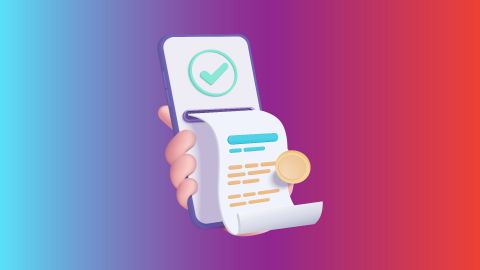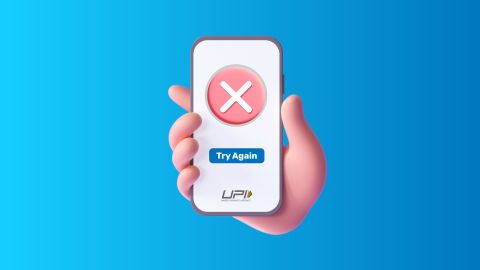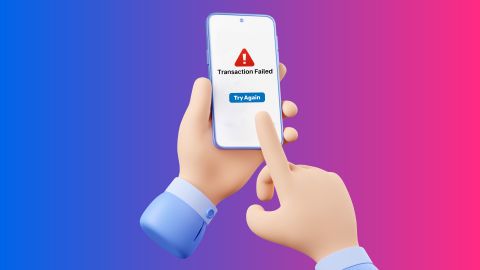Find expert tips on choosing, installing, and maintaining 2 Kilowatt meters, as well as comparing single-phase and three-phase options for optimal performance.
Get details about 2 Kilowatt meter
-
-
A 2 kilowatt meter is an electrical device designed to measure the consumption of electrical energy in kilowatts (kW) over time. Specifically, it can monitor up to 2 kilowatts of power usage, making it suitable for residential and small commercial applications. These meters are essential for tracking energy consumption, allowing users to understand their electricity usage patterns and manage their energy costs effectively.
As we harness this clean power, we must efficiently manage our electricity bills. Bajaj Finserv offers a convenient platform for making electricity bill payments through Bajaj Pay. For seamless transactions and to stay updated on your payments, consider using Bajaj Pay for your electricity bill payments.Applications of 2 Kilowatt Meters
2 Kilowatt meters are widely used in various applications, including:- Residential use: Monitoring energy consumption in homes to help manage electricity bills.
- Small businesses: Tracking power usage for cost management and efficiency improvements.
- Energy audits: Assisting in identifying energy waste and potential savings.
- Renewable energy systems: Measuring output from solar panels or wind turbines.
- Temporary installations: Used at construction sites or events to monitor temporary power usage.
How does a 2 Kilowatt meter work?
A 2 kilowatt meter operates by measuring the voltage (volts) and current (amperes) flowing through a circuit. The basic principle involves the following steps:
1. Voltage and current measurement: The meter continuously samples the voltage and current in the electrical circuit.
2. Power calculation: It calculates the power consumption using the formula
P=V×I
P=V×I, where P is power in watts,V is voltage, and I is current.
3. Energy accumulation: Over time, the meter accumulates this power measurement to provide a total energy usage figure expressed in kilowatt-hours (kWh).
4. Display and communication: Digital meters typically display real-time data on an LCD screen and may have communication capabilities for remote monitoring or integration with smart home systems.
This process allows users to track their energy consumption accurately, facilitating better energy management.Benefits of using 2 Kilowatt meter
Using a 2 Kilowatt meter offers several benefits:- Cost savings: By monitoring energy usage, users can identify high-consumption appliances and reduce unnecessary costs.
- Energy efficiency: Helps in optimising energy consumption patterns, leading to more efficient use of electricity.
- Accurate Billing: Provides precise readings that ensure fair billing from utility companies.
- Data logging: Many digital meters offer data logging features that help track usage over time for analysis.
- Environmental impact: Encourages users to reduce their carbon footprint by promoting energy-efficient practices.
Different types of electric meters
- Analog Meters: Traditional mechanical meters that use a rotating disk to measure energy consumption.
- Digital Meters: Electronic meters that provide precise readings and often include advanced features.
- Smart Meters: Allow two-way communication between the meter and utility company, offering real-time data and remote monitoring capabilities.
- Submeters: Used in multi-unit buildings to measure individual tenant usage separately.
How to choose the right kilowatt meter for your needs
When selecting a kilowatt meter, consider the following factors:- Type of Meter: Decide between analog, digital, or smart meters based on your needs.
- Capacity: Ensure the meter can handle your expected power load.
- Features: Look for additional functionalities like remote monitoring or data logging if needed.
- Compatibility: Ensure it integrates well with your existing electrical system.
Common issues with kilowatt meters and troubleshooting
Common issues with kilowatt meters include:- Inaccurate Readings: Can result from wear or damage; recalibration may be necessary.
- Display Malfunctions: Often due to electrical faults; check connections or replace the unit if needed.
- Communication Failures (in smart meters): May require resetting or checking network connectivity.
Energy efficiency of 2 Kilowatt meters
Kilowatt meters promote energy efficiency by providing users with insights into their consumption patterns. By analyzing this data, users can identify opportunities to reduce waste and optimize usage. This ultimately contributes to lower electricity bills and supports sustainability efforts.Feature Description Real-time Monitoring Allows immediate feedback on energy use, encouraging efficient habits. Historical Data Logging Tracks usage trends over time, aiding in identifying inefficiencies. Alerts for High Usage Some meters can send notifications when usage exceeds set thresholds. Integration with Smart Systems Facilitates automation of energy-saving measures based on real-time data. Comparing single phase and three phase meters
Feature Single Phase Meter Three Phase Meter Voltage Supply Typically up to 240V Typically up to 400V Applications Residential and light commercial Industrial and heavy commercial Number of Wires Two wires (live and neutral) Three wires (three phases) Cost Generally lower Higher due to complexity Measurement Capability Measures total consumption Measures each phase separately How to install and maintain 2 kilowatt keter
Installation Steps:
- Turn Off Power: Ensure safety by shutting off power at the main circuit breaker.
- Mount the Meter: Securely attach the meter according to manufacturer instructions.
- Connect Wires: Follow wiring diagrams to connect input and output terminals correctly.
- Power On: Restore power and check functionality.
- Regularly inspect for signs of wear or damage.
- Ensure connections are tight and corrosion-free.
- Schedule periodic calibration checks with professionals.
Importance of electricity payment online
- Instant payments: No delays or long queues.
- Wide accessibility: Pay anytime, anywhere.
- Safe transactions: High-end encryption ensures secure payments. By choosing Bajaj Pay, you support sustainability through efficient energy management.
-
Recharge and Pay Bills
Mobile Prepaid
Mobile Postpaid
Broadband Bill Payment
Electricity Bill Payment
Bajaj Finserv App for All Your Financial Needs and Goals
Trusted by 50 million+ customers in India, Bajaj Finserv App is a one-stop solution for all your financial needs and goals.
You can use the Bajaj Finserv App to:
You can use the Bajaj Finserv App to:
- Apply for loans online, such as Instant Personal Loan, Home Loan, Business Loan, Gold Loan, and more.
- Explore and apply for co-branded credit cards online.
- Invest in fixed deposits and mutual funds on the app.
- Choose from multiple insurance for your health, motor and even pocket insurance, from various insurance providers.
- Pay and manage your bills and recharges using the BBPS platform. Use Bajaj Pay and Bajaj Wallet for quick and simple money transfers and transactions.
- Apply for Insta EMI Card and get a pre-approved limit on the app. Explore over 1 million products on the app that can be purchased from a partner store on Easy EMIs.
- Shop from over 100+ brand partners that offer a diverse range of products and services.
- Use specialised tools like EMI calculators, SIP Calculators
- Check your credit score, download loan statements and even get quick customer support—all on the app.
Frequently asked questions
What is the purpose of a 2 Kilowatt meter?
A 1-kilowatt meter is designed to measure and monitor the energy consumption of devices or circuits that use up to 2 Kilowatt of power. It helps users track usage, manage energy efficiently, and reduce electricity costs.
How can I install a 2 Kilowatt meter at my property?
To install a 1-kilowatt meter:
1. Turn off the main power supply.
2. Connect the live and neutral wires to the meter’s input terminals as specified in the user manual.
3. Mount the meter securely in a safe, easily accessible location.
4. Restore power and test the meter to ensure it functions properly. For precise and safe installation, consider hiring a licensed electrician.
1. Turn off the main power supply.
2. Connect the live and neutral wires to the meter’s input terminals as specified in the user manual.
3. Mount the meter securely in a safe, easily accessible location.
4. Restore power and test the meter to ensure it functions properly. For precise and safe installation, consider hiring a licensed electrician.
What are the differences between single-phase and three-phase kilowatt meters?
Single-phase kilowatt meters are suitable for residential or small-scale setups, typically handling 230V systems. Three-phase meters are designed for industrial or high-load applications, supporting 400V or higher. Single-phase meters are cost-effective for low-demand usage, while three-phase meters manage higher loads and offer better efficiency for heavy-duty operations.
Can a 2 Kilowatt meter monitor renewable energy systems?
Yes, a 1-kilowatt meter can monitor the energy output of small renewable energy systems like solar panels or wind turbines. It provides accurate measurements of power generation and consumption, enabling better energy management and optimization.
How can I ensure accurate readings from my 2 Kilowatt meter?
- Confirm the meter is installed correctly with proper wiring.
- Avoid exceeding the meter’s maximum capacity of 2 Kilowatt.
- Calibrate the meter if required, following the manufacturer’s guidelines.
- Regularly check for loose connections or external damage.
- Test the meter on a known voltage source to validate its accuracy periodically.
Show More
Show Less




